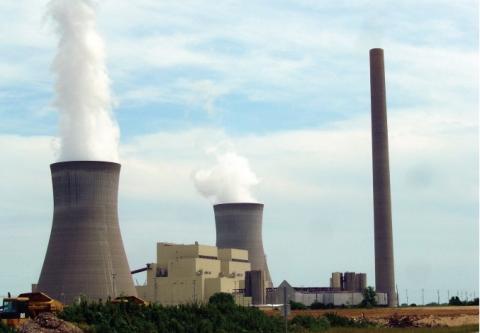Impact of new US rules for cooling water intakes

With the EPA issuing its final rules for implementation of Section 316(b), the clock is running for power plants that need to comply with this regulation. Section 316(b) doesn’t define the technology needed for compliance, only that “the location, design, construction, and capacity of a cooling water intake structure (CWIS) reflect the best technology available (BTA) for minimizing adverse environmental impact (AEI).”
In fact, there is no single technology that is best for all plants. The correct solution will depend on the existing plant equipment; the facility’s water use; the size, depth, temperature and flow characteristics of the water body; the local biology; and use of that water body by others.
Broadly speaking, compliance options fall into six main categories:
Fish Collection and Transfer – Travelling water screens are frequently used at CWIS to keep debris from clogging the steam condensers or heat exchangers. Starting in the 1970s, power plants have used modified screens that include fish-friendly features. These screens collect fish in a water-filled bucket and transfer them with a low-pressure spray wash system to a fish return line, which transfers them safely back to the source water body.
The designs since then have continued to evolve to further improve their effectiveness in reducing impingement mortality. In addition, fine-mesh screens (those with 2.0 mm or smaller mesh openings) have also been tested as a means to reduce entrainment. While these have been found to work well without excessive operational and maintenance issues, careful consideration of potential increases in mortality of the collected eggs and larvae must be considered.
Fish Diversion Systems – These include angled screens, louvers and angled bar racks which divert fish away from the intakes. In some cases, these are used in combination with special pumps designed to transfer fish with little or no mortality. The effectiveness of these methods varies with the species and flow rate.
Fish Exclusion Technologies – These are passive devices that use wedgewire screen material, polyester threads pressed into a fabric mat, or nets to keep fish out of the intake area. These methods use small mesh openings and a low through-screen velocity to keep fish out and reduce the number making it into to the cooling water system. As with fine-mesh screens, however, potential increases in mortality may be associated with the exclusion.
Behavioral Barriers – Sometimes fish can be deterred from entering the intake by using sound, strobe lights, mercury lights or electric fields, but the results vary by species and size. Air bubble curtains, water jet curtains, chemicals and other methods have also been tested but were not found to be consistently effective.
Flow Reduction - If possible, cooling water withdrawal can be curtailed during off-peak production times. Use of variable frequency drives can limit the amount of cooling water used to the amount needed at a given time, rather than keeping the pumps running at a maximum level continuously.
Closed-cycle Cooling – One final option, when appropriate, is to switch from an open-cycle to a closed-cycle cooling system with the use of cooling towers. If not possible for the entire facility, even switching parts of the plant to closed-loop cooling can reduce the amount of cooling water needed. However, the high costs and potential for other environmental impacts of this technology need careful consideration.
How to get started
It is clear that generating stations will need to do some careful planning to respond most effectively to these new regulations. Initial steps include compiling and summarizing relevant site-specific engineering information, as well as information to characterize the source water body and aquatic communities. Then one can start thinking about what compliance option would make sense for your facility.
There are nuances to all compliance options that can make a substantial difference in both their biological and cost effectiveness. Therefore, careful review of potential effectiveness of approaches, and how each option affects plant operations is needed to determine the best solution.
Finally, we strongly recommend hiring an independent consultant (who would have no vested interest in the ultimate project components) with prior extensive experience in this area to provide technical guidance/recommendations to comply with §316(b) requirements. The consultant will not only be familiar with the full range of options that can be used, but will also know how to thoroughly evaluate key site-specific factors. That way, you can get a BTA compliance approach which will not only save the most fish, but also save you the most on your capital and O&M budgets.
Alden (Alden Research Laboratory, Inc.) is a 119-year-old fluid flow and environmental consulting company, providing fish protection system testing and expertise, as well as flow modeling, flow testing, and field measurement services. ASA Analysis & Communication, Inc. is an environmental consulting firm founded in 1995. It provides technical and management services in support of the regulatory compliance needs of private and public sector clients throughout the United States.